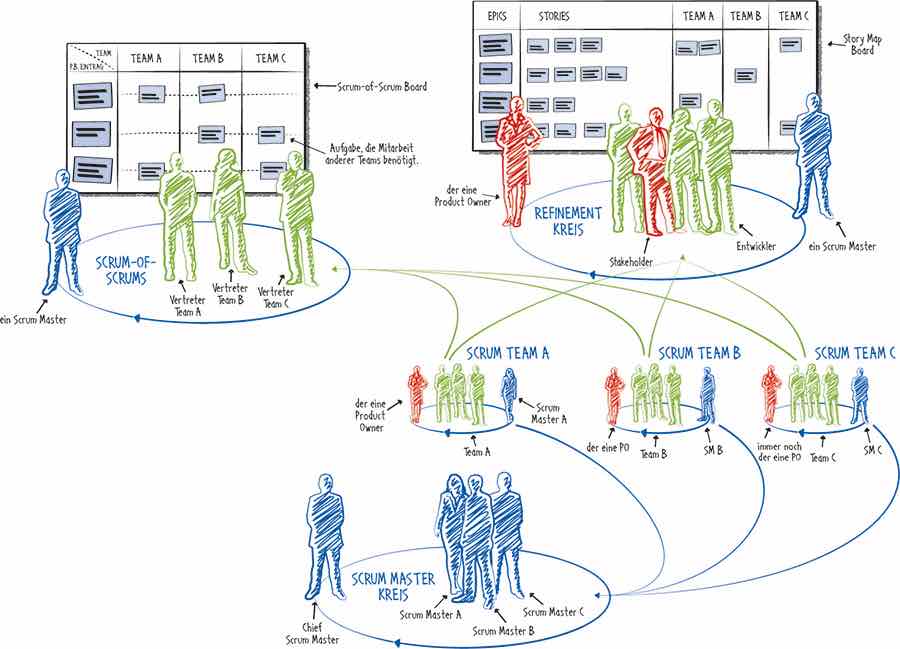A Scrum team consists of ten or fewer people. Scrum scales by forming several related Scrum teams for larger tasks, which all focus on the same product.
Collaborative Scrum teams share the product goal, product backlog, product owner and the definition of done. They create an integrated product together.
Typically, the refinement work for several teams is so extensive that the product owner will not do this work alone. There are many options for this: Representatives from the teams, a separate team, or a combination of both. If the refinement work is done in a team, it should be supported by one of the Scrum Masters. In all cases, the product owner remains responsible for the results of the joint product backlog.

Epics have proven their worth in organizing large product backlogs. An epic is a large product backlog entry that is broken down into more detailed entries (so-called "stories"). The story map technique can help to organize the epics and associated smaller product backlog entries of the current release. On the left-hand side of a story map are the epics that are to be implemented in the release. On the right-hand side are the smaller product backlog entries that are required to implement the epic. Then comes the column for the current sprint, subdivided by team if necessary. Each sprint is then a "cross-section" of the epic entries. (Sometimes such story maps are also organized from top to bottom instead of left to right).
Several teams require several Scrum Masters. Some teams may share Scrum Masters, and there may also be an additional Scrum Master who focuses on facilitating cross-team collaboration. In all cases, the Scrum Masters work together to jointly address organizational obstacles, to share good practices and to facilitate cross-team collaboration.
When working together on a joint product, it can happen that tasks of the individual Scrum teams require the cooperation of other Scrum teams. This is where a Scrum-of-Scrums event helps. Representatives of the Scrum teams meet once a day to discuss tasks that require the cooperation of other teams. On a Scrum-of-Scrums board, they identify product backlog items and tasks that need to be coordinated during the sprint. The Scrum-of-Scrums event is moderated by one of the Scrum Masters.
Scrum teams that belong together have a common sprint. This means that the sprint lengths of the different Scrum teams are synchronized and the sprints of the Scrum teams are parallel to each other.
Agile on a large scale is described in detail in the book by M. Foegen and C. Kaczmarek: "Organization in a digital aget", wibas, 2020.

Write a comment